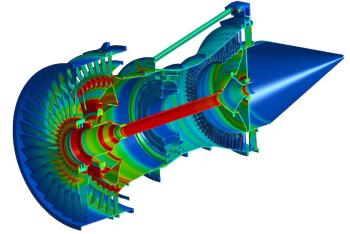
Bloom Energy Secures up to $75M in Federal Tax Credits for Fremont Plant
The tax credits will be invested in the operational efficiency and the expansion of electrolyzer stacks at Bloom Energy’s Fremont manufacturing facility in California.
The Department of Energy (DOE), Department of Treasury, and the Internal Revenue Service (IRS) awarded up to $75 million in federal tax credits to Bloom Energy for its multi-GW fuel cell and electrolyzer manufacturing plant in Fremont, CA. The tax credits were granted under the Qualifying Advanced Energy Project (QAEP) 48C initiative. The funding is part of the $4 billion in tax credits announced by the White House under the QAEP Tax Credit program, which is designed to advance domestic clean energy manufacturing and reduce greenhouse gas emissions at industrial facilities.
“The Qualifying Advanced Energy Project Tax Credit is a highly sought after government incentive that brings financial support to over 100 projects across 35 states to accelerate domestic clean energy manufacturing and decarbonization,” said Bloom Chief Operating Officer Satish Chitoori. “The $75 million tax credit, equaling up to 30% of expenditures to expand the Fremont capacity, recognizes our commitment to scaling domestic manufacturing, so we are grateful to have been among the companies to receive the credit for capital projects.”
At Bloom Energy’s recently opened Fremont facility, the company manufactures high-efficiency fuel cell stacks for its Energy Server platform and Bloom Electrolyzers. The Fremont manufacturing facility is a 164,000 square foot site that celebrated its grand opening in 2022, expanding Bloom Energy’s footprint to more than 524,000 square feet and creating hundreds of clean energy jobs. The annual power output can produce over 1 GW—the equivalent capacity of adding a nuclear power plant each year.
“The $75 million of funding from the federal government is a vote of confidence in Bloom’s commitment to domestic manufacturing, in our solid oxide technology, and in our mission to facilitate the energy industry’s decarbonization,” said KR Sridhar, Founder, Chairman and CEO of Bloom Energy. “These funds will enable us to invest in the operational efficiency of our Fremont facility and accelerate the expansion of our stack capacity, so that we can continue to deliver timely, resilient power solutions to our customers.”
Bloom Energy’s fuel cells use its proprietary solid oxide technology and operate at a high efficiency without combustion. Solid oxide fuel cells enable flexible deployment and operating customization based on considerations including cost, resilience, and sustainability.
The company and SK ecoplant recently agreed to terms on the
“The extension of our partnership with SK ecoplant to include this deployment of Bloom’s SOEC is a logical step to show the efficiency of our electrolyzers compared to other technologies in the South Korean market,” said Sridhar. “South Korea has been a leader in policies enabling clean hydrogen, and the efficiency and flexibility of Bloom’s SOEC will demonstrate our commitment to the lowest cost green hydrogen for South Korea.”
Newsletter
Power your knowledge with the latest in turbine technology, engineering advances, and energy solutions—subscribe to Turbomachinery International today.





